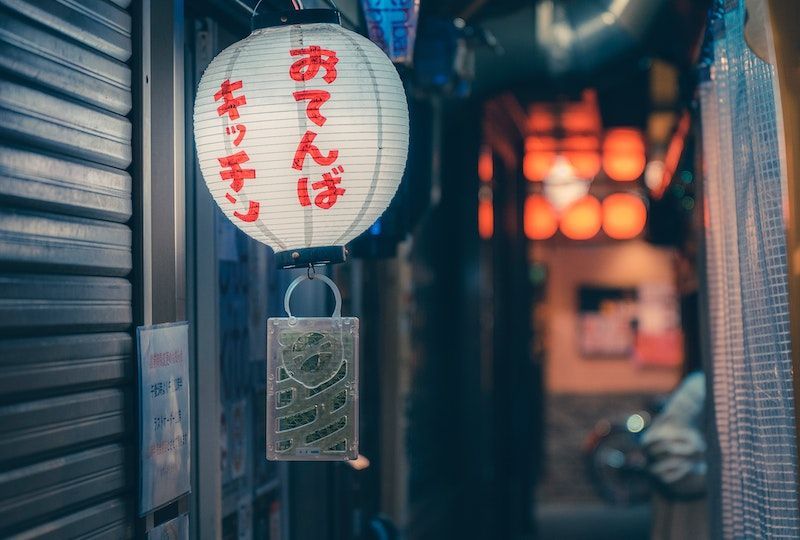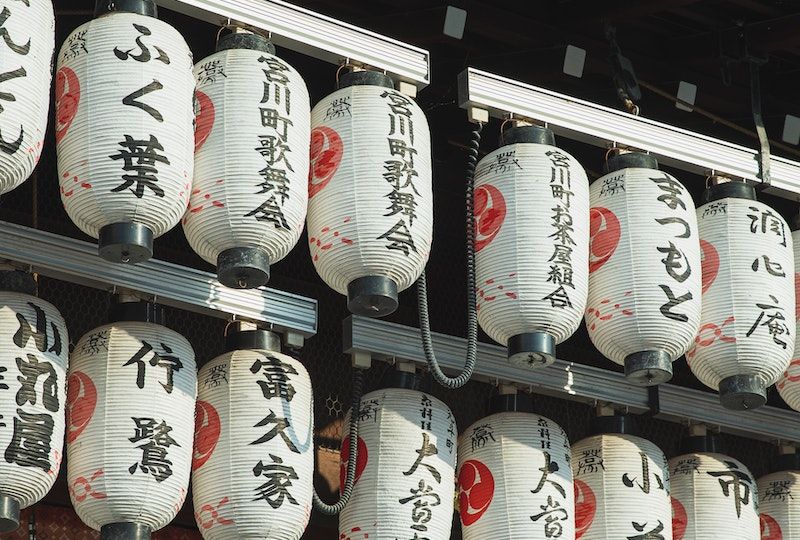The Ultimate Guide to Japanese Particles

Learning a new language is like starting over. It’s almost like learning to speak again, like a baby. This can be a daunting task, especially if you’re a native English speaker tackling Japanese. Unlike what many overly optimistic “Free Learn Japanese” websites will tell you, Japanese isn’t easy for English speakers pick up. In fact, according to LiveScience, Japanese is among the most challenging languages to learn for a native English speaker due to huge differences like Japanese particles and kanji characters. But don’t let that stop you! Babies learn Japanese in just a few years, and so can you with the right Japanese guide.
To learn Japanese effectively, you have to learn foreign alphabets, new sounds, and even a new sentence structure. For that last one, you’ll have to learn about Japanese particles to improve your Japanese flow and fluency. It helps a lot to think about this in terms of your native language: English. Many Japanese guides and free learn Japanese websites teach Japanese particles as an entirely new concept, but in this ultimate Japanese guide, we will discuss Japanese particles in relation to their English equivalent: prepositions. By the end, you will have a solid knowledge of Japanese particles and how they work.

A Quick Look at English and Japanese Sentence Structure
First, to understand the usage of particles alongside loanwords in Japanese, you have to understand the structure of Japanese sentences. So, let’s take a little skip-and-hop back to middle school English class. In English, a sentence has to have a subject, verb, and object, usually in that order:
We (subject) are going (verb) to Tokyo (object).
As any free learn Japanese guide will tell you, though, the verb comes last in basic Japanese sentences. Here’s the same sentence in Japanese:
私たち(subject) は 東京 (object) に 行きます (verb)。
Watashi-tachi (subject) wa Tokyo (object) ni ikimasu (verb).
Okay, now let’s talk about English prepositions. In the example sentence above, “to” is an example of a preposition. “In," "on," "at," "by," "with," are other common examples. These little words indicate where something is located, how it relates to other objects or individuals, and when an action takes place. They may be small, but they play a significant role in conveying meaning and clarifying the relationships between parts of a sentence. Just think of the difference between “Mary climbed up the ladder” and “Mary climbed into the ladder.” Very different meanings!

What Are Japanese Particles?
Now we’re ready to talk about particles. Much like prepositions, Japanese particles connect the dots of Japanese sentence structures. However, they are “post-positions” rather than “pre-positions.” While English prepositions appear before the noun or verb they modify, Japanese particles appear afterward.
Here’s an example to help you picture this. Let’s lengthen our example sentence from earlier:
We are going TO Tokyo FOR summer.
In this sentence, the prepositions “TO” and “FOR” qualify the word that comes after them (“Tokyo” and “summer,” respectively.) Now, take the same sentence in Japanese. The three particles are in parentheses.
私たち[は] 夏 [に] 東京 [に] 行きます.
Watashi-tachi [wa] natsu [ni] Tokyo [ni] ikimasu.
Here are the three pairs of particles with their respective nouns:
私たち (watashi-tachi) - “we” followed by は (wa) - topic particle
夏 (natsu) - “summer” followed by に (ni) - particle indicating time frame
東京 (Tokyo) followed by に (ni) particle indicating the destination
There are a lot of Japanese particles out there—up to 188 according to some sources! However, you only need to know a handful to be intelligible in general conversation.
Japanese Particles in Context
Now that you know what particles are, we can take a better look at our simplified sample sentence:
| 私たち | は | 東京 | に | 行きます |
|---|---|---|---|---|
| Watashi-tachi | wa | Tokyo | ni | ikimasu |
| Subject + Particle 1 + Object + Particle 2 + Verb | Particle 1 | Object | Particle 2 | Verb |
This is the basic structure for Japanese sentences. Let’s take a look at another sentence:
日本で会いましょう.
Nihon de aimashou.
This sentence translates to “Let’s meet in Japan,” but of course, the word order is different. Can you guess which word means what, where the particle is, and which word it modifies? I’ll give you the answer later in this Japanese guide, but try to figure it out on your own first.

The Main Differences between Japanese Particles and English Prepositions
As you already know, English prepositions are our equivalent to Japanese particles. Both are function words that indicate the relationship between words in a sentence. However, there are some critical differences between the two that you should be aware of. You already learned that Japanese particles go after the word they modify, while English prepositions can be placed before or after the word they change. However, there are two other differences you should also be aware of:
Number: In addition to the huge number of Japanese particles (about 188), Japanese particles are used more frequently than English prepositions. That means you need to spend time mastering particles if you want to get really good at Japanese.
Meaning: The meaning of a Japanese particle can vary depending on the context in which it is used, while the definition of an English preposition is usually more fixed. Many “free learn Japanese” websites state that Japanese particles are "subjective" to the word type they modify, while English prepositions are objective. This means the word type the particle connects with has an effect on the meaning of the particle itself.
Ready to break down that example we mentioned earlier?
日本 (Japan) で [de – particle] 会いましょう (let’s meet).
Nihon (Japan) de [particle indicating place] aimashou (let’s meet).
BONUS: ましょう (mashou) - is a polite auxiliary verb that expresses the speaker's intention to do something
Got that? If you’re still confused and the “free learn Japanese” websites aren’t cutting it, don’t worry. We’ve got some more resources for you in this Japanese guide to particles.

Common Japanese particles, their English preposition, Meaning and Usage Example
Remember how I mentioned the huge number of Japanese particles? The table below shows nine Japanese particles you’ll use a lot. Start with these, then work your way up using a more extensive Japanese guide from a textbook.
| Japanese Particles | English Preposition | Meaning | Example |
|---|---|---|---|
| は [wa] | subject marker | marks the subject of a sentence | 私はリンゴを 食べます (I eat apples.) |
| が [ga] | subject marker | marks the subject of a sentence (slightly different usage than the above–this is a tricky topic we don’t have time for here) | 意味が分かりました (I understand the meaning) |
| の [no] | genitive marker | marks possession or relationship | 私の 家は東京にあります (My house is in Tokyo.) |
| を [o] | direct object marker | marks the direct object of a verb | 私はリンゴを 食べます (I eat apples.) |
| に [ni] | locative marker | marks location or destination | 学校は駅の近くにあります (The school is near the station.) |
| から [kara] | source marker | marks the source of something | 私は日本から来ました (I came from Japan.) |
| へ [e] | destination marker | marks the destination of something | 私は東京へ 行きます (I am going to Tokyo.) |
| と[to] | conjunction | marks the conjunction of two or more things | リンゴとバナナを買いました (I bought apples and bananas.) |
| で [de] | instrumental marker | marks the means by which something is done | 車で学校に行きました (I went to school by car.) |
Learn Japanese from Start to Finish
If this Japanese guide to particles felt overwhelming, don’t give up! Return to it again to solidify your knowledge. This might be a new concept, for you, and no matter how we have tried to simplify it, review and practice is crucial for complete comprehension. Learning over 100 particles may seem challenging at first, but it gets better once you start using them often.
It might not be easy transitioning from knowing and understanding Japanese to being able to speak, but you can do it! Using a combination of “Free learn Japan” resources, online tools like Speechling, and traditional classroom learning make mastering Japanese possible and even fun. The best way to learn a language is by speaking it; when you take speaking seriously, you can start talking in no time. This language philology makes Speechling, with its loads of articles on how to learn Japanese and focus on fluid speech, an excellent tool as you go along your journey.

